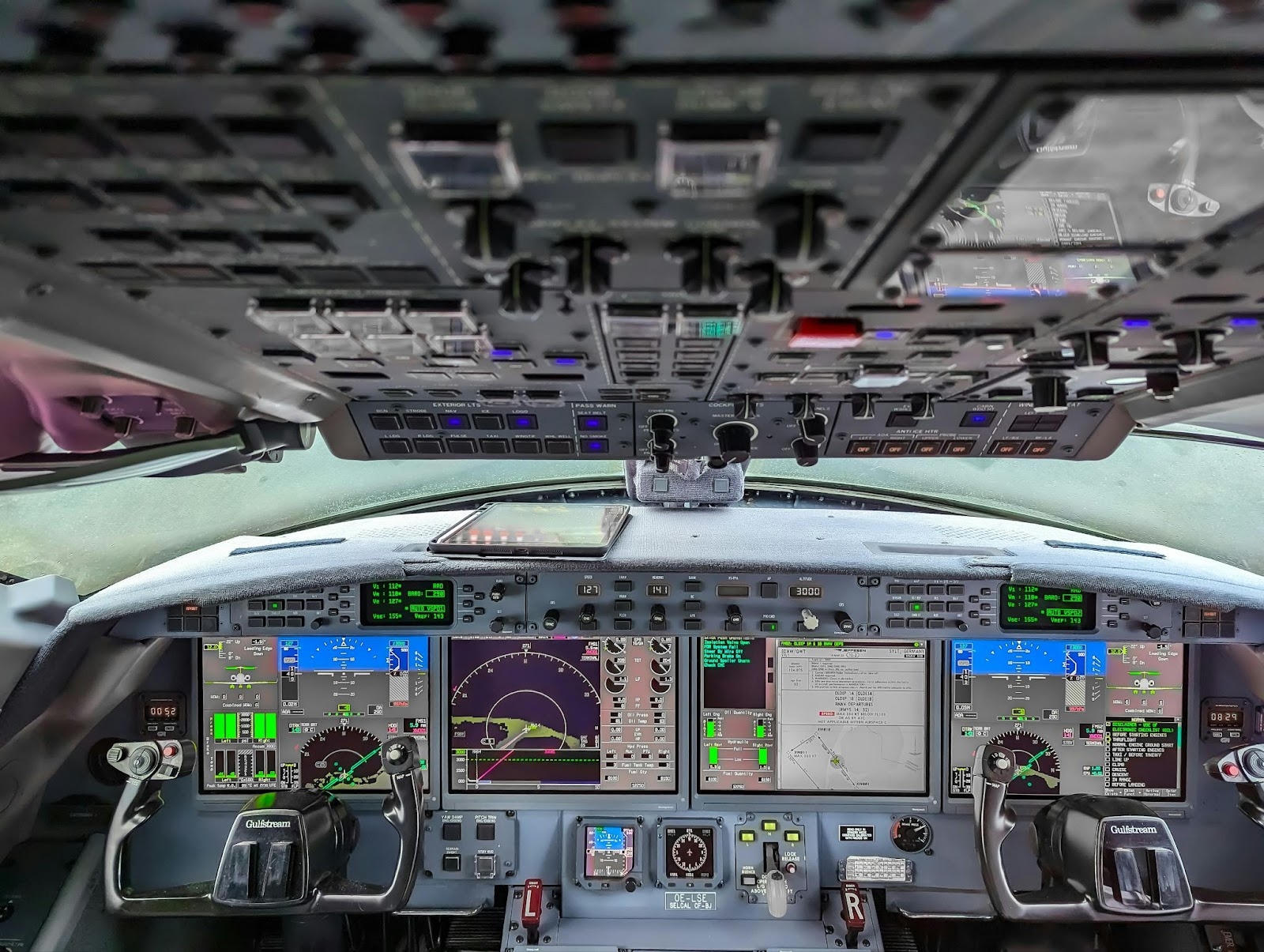
AeroGenie — Your Intelligent Copilot.
Using AI-Based Email Tools to Automate Procurement in Aviation
March 13, 2025
Manual procurement processes slow down aviation supply chains, increase costs, and create compliance risks. AI-powered email tools like EmailAI automate these processes so your company can efficiently scale. Learn how AI-based email tools are transforming aviation.
Procurement in the aviation industry is a high-stakes game. With strict regulations, complex supplier networks, and razor-thin margins, inefficiencies in procurement can drive up costs and bring flight operations to its knees. Traditional procurement methods rely heavily on manual workflows, making it difficult to keep pace with the industry's fast-moving demands.
AI-driven procurement automation, in early adoption phases, is bringing efficiency gains thought impossible less than a decade ago. Aviation companies that leverage AI-powered email and other tools can streamline workflows, eliminate procurement bottlenecks, and gain a major edge in the market.
AI-powered email uses machine learning, large language models (LLMs), and autonomous decision-making to transform dated manual processes into engines of streamlined, data-driven efficiency.
This article explores current challenges in aviation procurement, the benefits of AI-based automation, and how EmailAI can fundamentally shift the way aviation businesses handle procurement.
Current challenges in aviation procurement
Despite its critical role in aviation, procurement is plagued by inefficiencies. Here’s a breakdown of the biggest challenges:
Dated workflows
Many aviation procurement processes still rely on manual email exchanges, spreadsheets, and outdated enterprise resource planning (ERP) systems. This slows down procurement cycles and increases the risk of human error. Miscommunication, overlooked purchase requests, and delays in supplier responses all create unnecessary bottlenecks.
Rising costs
With volatile fuel prices and labor costs rising, procurement teams are under pressure to control expenses. However, inefficient procurement workflows can lead to overpaying for parts, missed bulk discounts, or failure to optimize supplier contracts. Without real-time data and automation, cost containment becomes a significant challenge.
Supply chain disruptions
From global logistics hurdles to unexpected maintenance needs, aviation procurement teams constantly deal with supply chain disruptions. These issues are exacerbated by manual RFQ (request for quote) processes, where procurement teams must manually compare vendor responses and negotiate pricing, a time-consuming process that doesn’t adapt well to sudden supply chain shocks.
Managing compliance
Aviation is one of the most heavily regulated industries in the world, and it includes every facet of the industry: Procurement is no exception. It’s incredibly time-intensive to ensure that every vendor, every part, and every transaction meets strict compliance and safety regulations—across multiple international protocols, no less.
Without automation, procurement teams must manually track and verify compliance, increasing the risk of oversight, audits, penalties, and other business risks.
Optimizing procurement processes
Aviation procurement is complex, but it doesn’t have to be inefficient. Companies modernizing workflows can reduce costs, improve supplier relationships, and enhance operational efficiency.
Here’s how aviation MRO teams can optimize their processes:
Collaborative relationships with suppliers
Strong supplier relationships are key to cost savings, reliable delivery, and predictable procurement cycles. When procurement teams maintain clear, consistent communication with vendors, they can negotiate better pricing, secure priority access to critical parts, and manage regulatory compliance without delays.
However, manual email chains and outdated tracking systems often lead to miscommunication and missed opportunities. AI-driven solutions allow procurement teams to centralize disparate communication threads, automate follow-ups, and analyze supplier performance to improve long-term partnerships.
Streamlined data
Procurement success hinges on access to reliable, up-to-date information, yet many aviation companies still rely on scattered spreadsheets, siloed ERP systems, and manual invoice processing. These slowdowns make it difficult to track spending, supplier performance, and compliance requirements.
Procurement teams leveraging AI-driven data extraction and categorization can consolidate vendor quotes, purchase histories, and compliance records into one single, searchable platform. This reduces errors and increases accessibility, speeding up decision-making as teams always have the most up-to-date information.
Automation
Automation is the foundation of efficient, scalable procurement processes. AI-powered email tools can:
- Extract and categorize RFQs automatically
- Generate and send responses based on historical data
- Flag high-priority purchase requests for review
- Track supplier performance and suggest optimizations
With aviation MRO teams reducing the need for manual intervention, they can focus on strategic decision-making rather than repetitive administrative tasks.
The role of AI-based email tools in automating procurement
AI-powered email tools are redefining aviation procurement as we know it, eliminating manual inefficiencies, and accelerating decision-making. These tools leverage advanced technologies to automate RFQs, analyze supplier responses, and optimize procurement workflows. Here’s a look at the key AI components driving this transformation:
Reinforcement learning
Reinforcement learning (RL) enables AI systems to improve procurement processes continuously by learning from past decisions. In procurement automation, RL can help:
- Optimize supplier selection by analyzing historical data and contract performance.
- Adjust pricing strategies based on market fluctuations and previous negotiations.
- Automate procurement approvals by identifying patterns in past purchases.
With its ability to swiftly adapt to real-world procurement scenarios, RL-driven AI can make instant, smart purchasing decisions with minimal human input.
Autonomous processing
Autonomous AI allows procurement teams to streamline workflows without constant oversight. AI-based email tools can:
- Automatically detect and categorize incoming RFQs.
- Prioritize urgent procurement requests based on order value, vendor relationship, and supply chain conditions.
- Auto-generate and send responses to vendors, reducing delays.
These automations reduce administrative workload and keep procurement cycles running efficiently, even during high-demand periods.
Large language models (LLMs)
Large language models (LLMs) enhance procurement automation by extracting and interpreting complex procurement requests from emails.
With LLMs, AI can:
- Understand the context of RFQs, purchase orders, and supplier queries.
- Extract relevant details and populate procurement databases.
- Generate clear, concise responses that align with procurement policies.
LLMs can standardize communication, reducing errors so procurement teams don’t miss critical details buried in long email threads.
K-means clustering
K-means clustering is a machine learning technique that groups similar data points together. In procurement automation, it helps by:
- Categorizing suppliers based on past performance, pricing, and response times.
- Identifying trends in purchasing behavior to optimize procurement strategies.
- Segmenting RFQs to prioritize urgent or high-value requests.
Procurement teams who leverage these clustering techniques can identify the best suppliers faster and make data-driven purchasing decisions.
EmailAI
EmailAI is an AI-powered email automation tool that streamlines procurement in the aviation industry. The powerful platform reduces manual tasks, automates workflows, and accelerates response times. This enables procurement teams to manage RFQs and supplier communications more effectively. Here are the key benefits of EmailAI:
Faster RFQ processing
Time is critical in aviation procurement, and manual RFQ processing can slow down purchasing decisions—at times, bringing procurement to a total halt.
EmailAI eliminates standstills and bottlenecks:
- Extracting relevant details from incoming RFQs.
- Categorizing and prioritizing requests based on urgency and supplier history.
- Generating and sending responses automatically, reducing delays.
Teams using ePlaneAI’s EmailAI can thus secure the best deals faster and avoid supply chain disruptions.
Fewer procurement errors
Manual procurement processes are prone to errors, from misentered data to missed compliance requirements.
EmailAI minimizes these risks by:
- Using AI-driven validation to detect inconsistencies in supplier quotes.
- Reviewing all necessary compliance data is included before approval.
- Reducing human intervention in repetitive procurement tasks.
This level of accuracy prevents costly mistakes and improves overall procurement reliability.
Improved supplier communication
Keeping track of supplier emails, negotiations, and contract details can be overwhelming.
EmailAI centralizes and streamlines supplier interactions, making it easier to:
- Automate follow-ups on pending RFQs.
- Track supplier response times and performance metrics.
- Maintain a searchable archive of procurement communications.
With automated and structured supplier communication, procurement teams can build stronger, more reliable vendor relationships.
Cost savings through data-driven insights
EmailAI analyzes historical procurement data to identify cost-saving opportunities. The system can:
- Recommend suppliers with better pricing based on past transactions.
- Highlight bulk purchase opportunities to maximize savings.
- Identify spending patterns to optimize procurement strategies.
Teams who use EmailAI can control costs by making smarter data-driven decisions, with data fueled by historical records, current conditions, and forecasted trends.
Enhanced scalability for growing operations
As aviation companies expand, procurement demands increase. Manual procurement processes struggle to scale with growing supplier networks and higher RFQ volumes. EmailAI can take these pain points away by:
- Handling large volumes of procurement requests simultaneously.
- Adapting to new supplier contracts and pricing structures automatically.
- Maintaining consistent procurement performance across different teams and locations.
With EmailAI, aviation companies can scale their procurement operations without increasing administrative overhead.
The future of procurement automation in aviation
The aviation industry’s procurement challenges aren’t going away, but with AI-driven automation, companies can reduce inefficiencies, cut costs, and improve supplier relationships.
Traditional procurement methods rely on manual workflows that slow down decision-making and introduce costly errors, but AI-based email tools like EmailAI solve these issues by automating RFQs, enhancing supplier communication, and providing data-driven insights for optimal procurement pricing and workflows.
As procurement demands grow, companies need automated methods to keep pace. Aviation companies that embrace AI-powered procurement tools will stay ahead of competitors, well-positioned to absorb shocks in pricing, parts availability, and other supply chain disruptions.
With EmailAI, procurement teams can eliminate tedious administrative work, speed up procurement cycles, and focus on strategic initiatives that drive long-term success.
Ready to future-proof your procurement process? Book a call with ePlaneAI to see how EmailAI can automate sourcing, accelerate cycles, and give your team time to focus on what really matters.
Aviation Maintenance Trends That May Gain Momentum in Uncertain Circumstances
Aircraft are staying in service longer, supply chains are a powder keg, and the tech is evolving overnight. Discover the maintenance trends gaining momentum and what they mean for operators trying to stay airborne and profitable.

October 2, 2025
Choosing the Right Aircraft Parts with Damage Tolerance Analysis
The future of aviation safety is all about the parts. Authentic, traceable parts bring optimal damage tolerance and performance to fleets for maximum safety and procurement efficiency.

September 30, 2025
How to Enter New Aviation Markets: The Complete Guide for Parts Suppliers
Breaking into new aviation markets? Learn how suppliers can analyze demand, manage PMA parts, and build airline trust. A complete guide for global growth.

September 25, 2025
5 Aviation Marketing Strategies You Should Use to Sell to Global Airlines
Airlines face shrinking margins and rising expectations. See how top strategies—dynamic offers, partnerships, personalization, and more—can close deals with global carriers.
